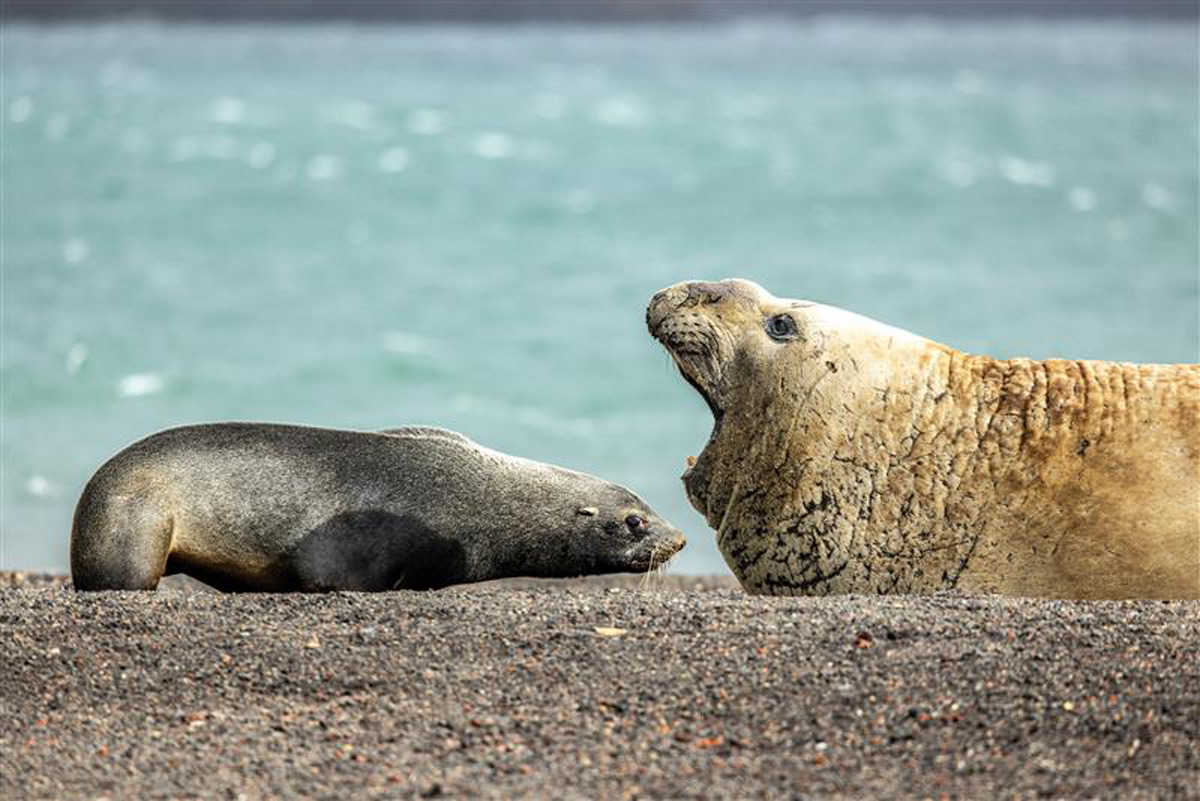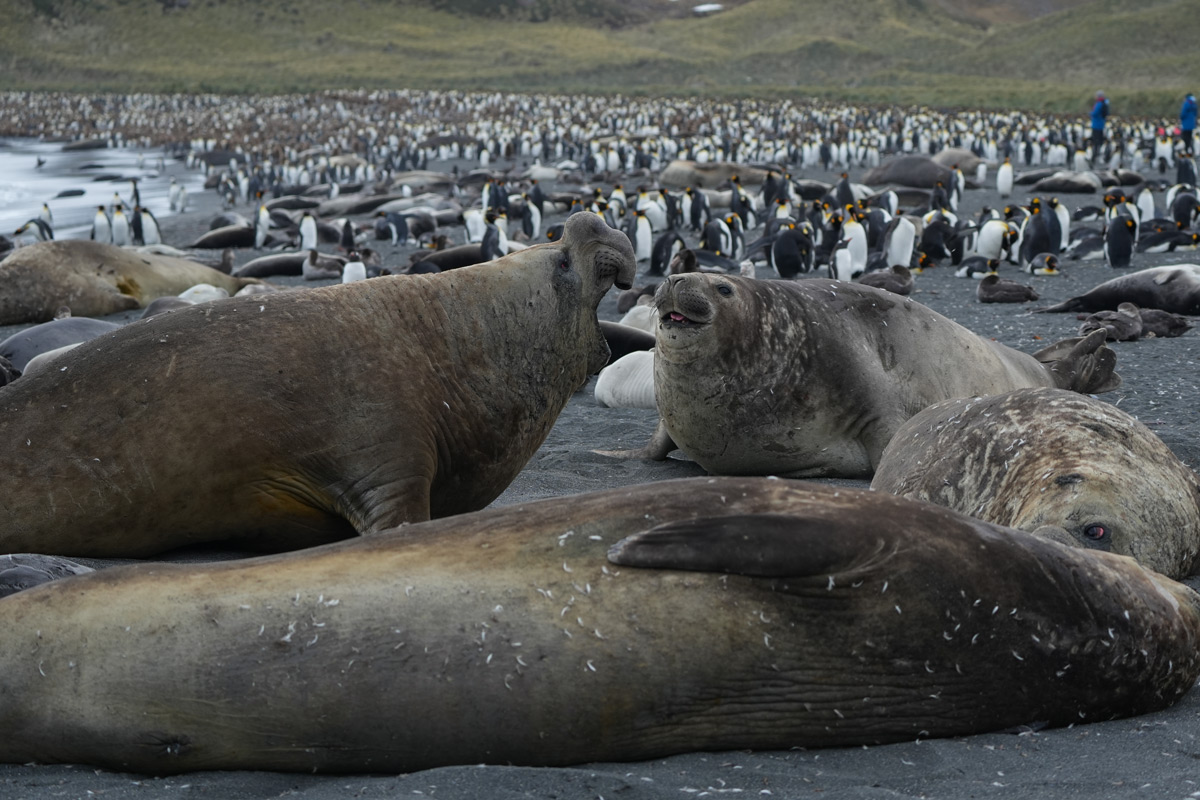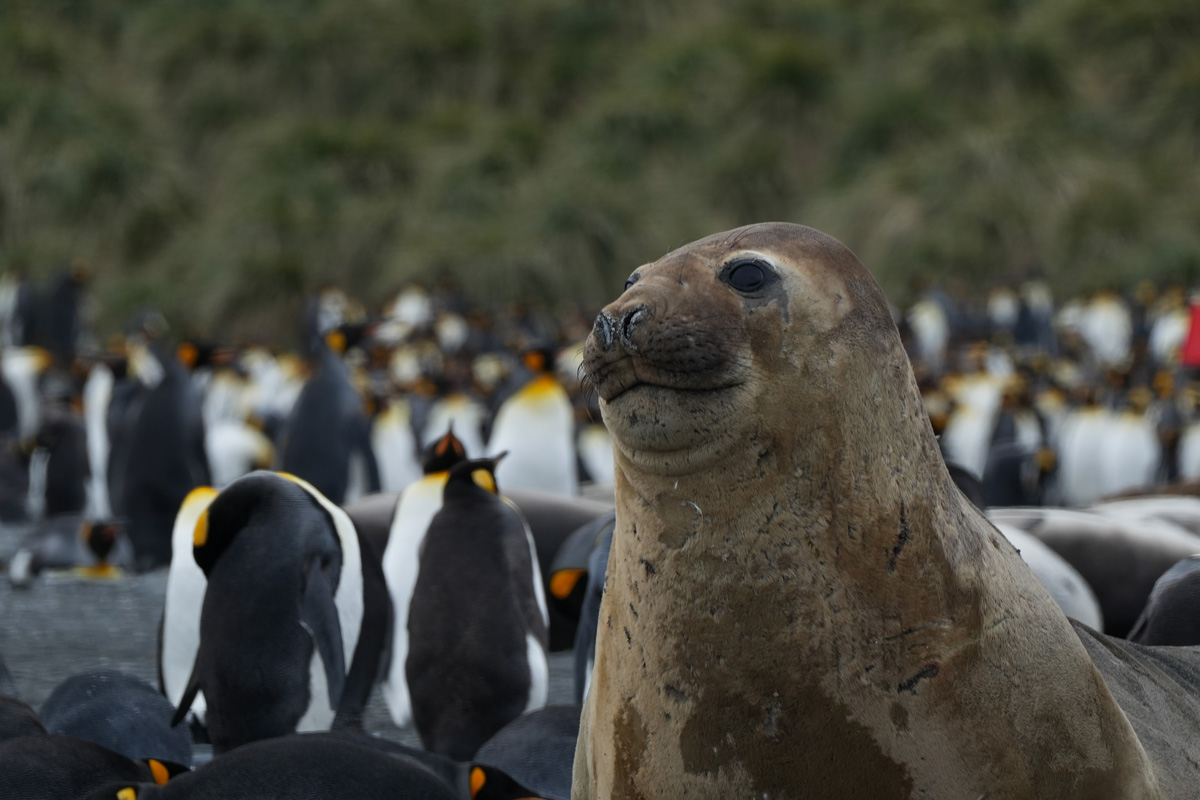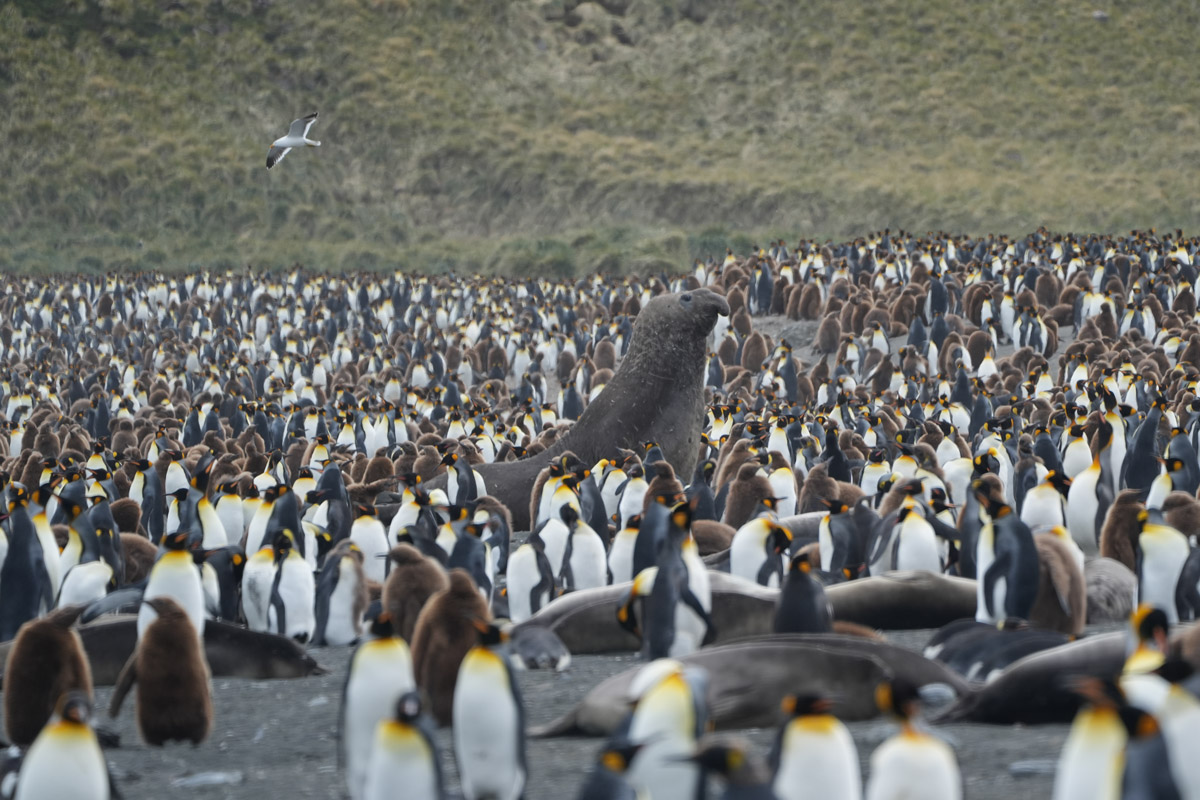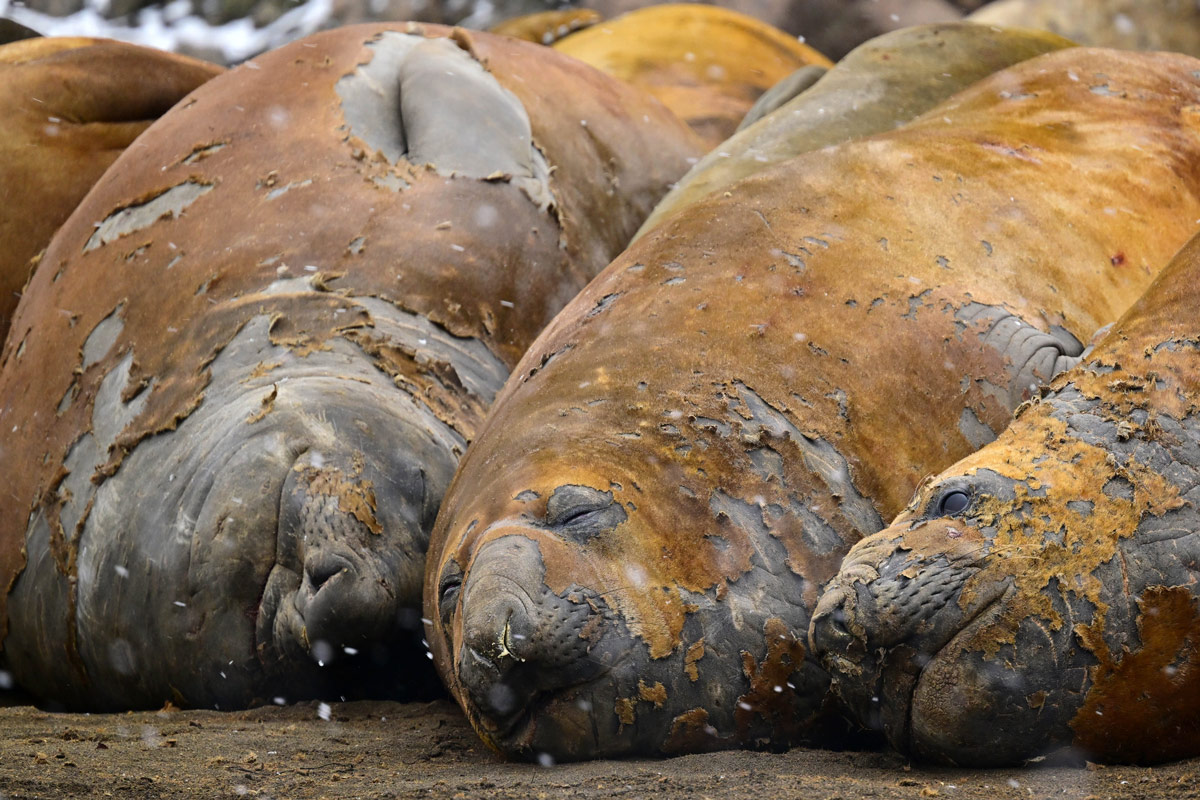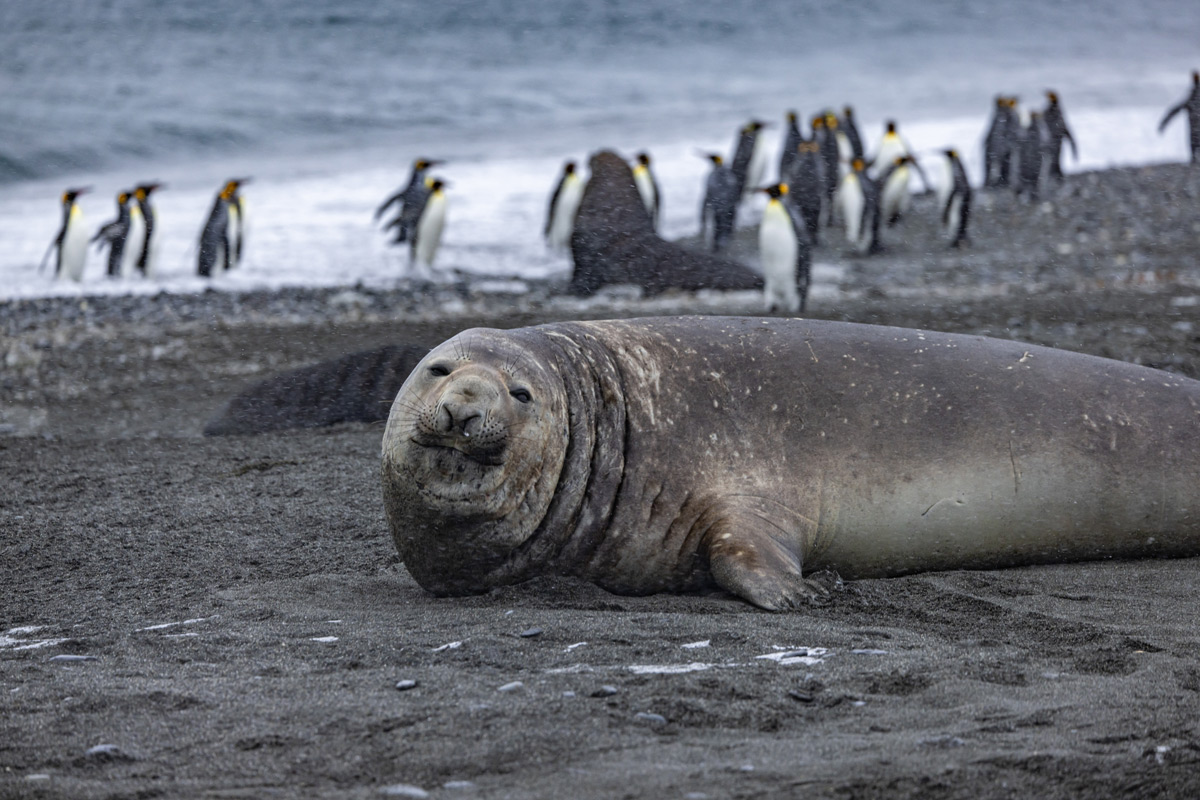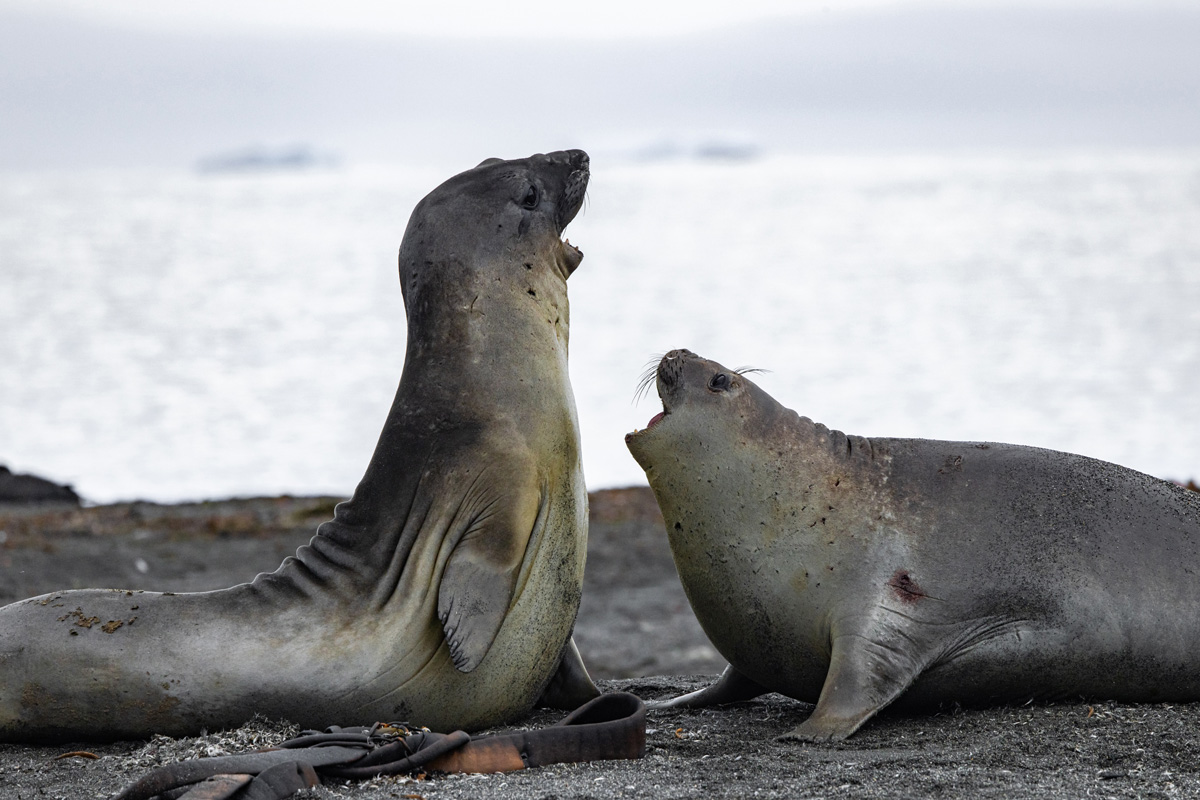The Southern Elephant Seal
With the brilliant array of unique animals we see in and around Antarctic waters, a trip to Antarctica is truly a dream for anyone who loves animals. Even if you’re not the keenest of animal enthusiasts, somehow the Southern Hemisphere’s creatures have a way of charming everyone. The most unlikely of these animals might just be the Southern Elephant seal. Giant, hulking masses on the beach, a male Elephant seal is a formidable sight. Yet something about them mesmerizes our guests. Let’s discover how these spectacular creatures quickly become a favourite for all who see them!
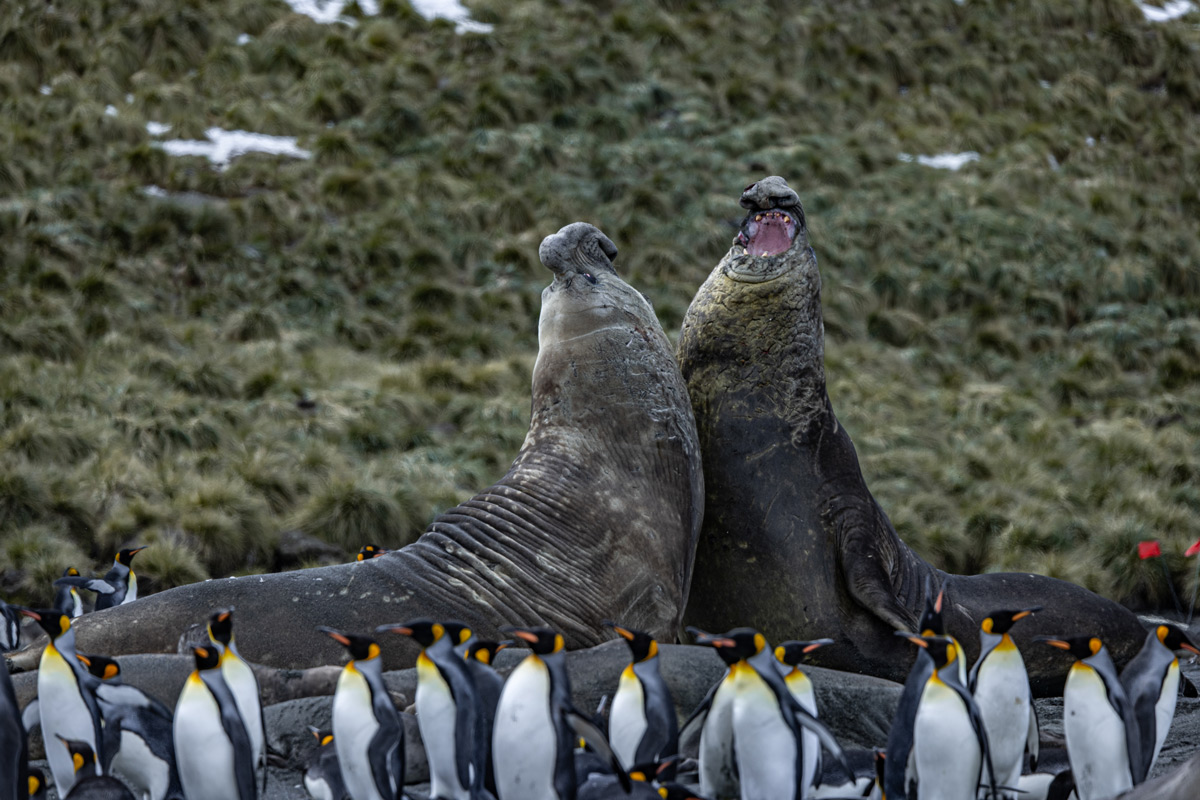
Males emit strong, powerful vocalisations to assert dominance within their group during the breeding season
Southern Elephant Seal Quick Overview
| Scientific Name | Mirounga leonina |
| Population | Estimated at close to 700,000 globally |
| Regions | Sub-Antarctic islands and Antarctic coastline |
| Destinations | Falkland Islands, South Shetland Islands, Antarctic |
| Average Length | ~2.6–5.7 m (8.5–18.7 ft) |
| Average Weight | ~400-4,000kg (880-8,800 lbs) |
| Diet Habits | Deep-sea fish, squid, crustaceans and snails |
Frequently Asked Questions About the Sea Elephant
What do southern elephant seals eat?
The southern elephant diet mainly consists of fish and squid, supplemented with snails and crustaceans that they catch during dives that can be very deep and are only surpassed by some whales.
Where do southern elephant seals live?
Relatives in the Monachinae subfamily and unlike other true seals such as the crabeater seal, ross seal, weddell seal, and leopard seal, they did not adapt to life on ice. Instead, they are the most land-adapted of all seals, and the southern elephant seal’s habitat is mainly the remote beaches that are used for breeding. Outside of the breeding season, they usually live in the sea along the Antarctic coast, but sometimes those big creatures come ashore to rest. They breed in the same colonies each year on several sub-Antarctic islands surrounding the continent, with the largest colonies on South Georgia Island, but are also seen in the Falkland Islands, South Shetland Islands, and the Antarctic Peninsula.
How big are southern elephant seals?
When the southern elephant seal pups are born, they usually weigh around 40-45 kg. The female nurses them for about three weeks, and afterwards the baby elephant seal starts hunting in the water for prey, but its mother continues nursing for another five weeks until they reach a weight of at least 120-130 kg, after which it is left on its own.
Male elephant seals are the absolute giants among all seals and among the biggest carnivores. In terms of weight among carnivores, it is only surpassed by the largest toothed whales. Thus, these majestic creatures are the heaviest marine mammals that also live on land. They range between 4.2 and 5.7 m long with a weight of 2.2-4 tonnes. Additionally, female southern elephant seals are five times smaller than the males, reaching up to 2.6-3 m in length with a weight between 400 and 900 kg, which is slightly smaller than the females of the walrus.
What makes them unique among marine mammals?
Considering their incredible size, elephant seals travel surprisingly far. They will travel up to 21,000 miles per year, which is the longest known migration of any mammal. While other species of seal stay close to land, the elephant seal will swim out to the deep ocean for more than 80 percent of its life, spending much of that time deep below the surface. They can hold their breath for more than 20 minutes, which is longer than any other non-cetacean mammal, and reach depths up to 3,000ft.
How long do southern elephant seals live?
The southern elephant seals lifespan ranges from 20 to 22 years, but it can live up to 30 years. Usually, females live longer than males.
What is their breeding behavior like?
An Elephant seal breeding ground is not for the faint-hearted, but we can attest that it is a remarkable site to behold. The males are big, bad and belligerent, inflating their noses and making deep noises, ready to fight other males to show who’s boss. They fight by raising up their massive bodies and ramming into each other with chests and teeth. The females can be seen languidly lounging on the beach, gathering in groups of up to 50, called a ‘harem’. They are there first to give birth, then when they are ready, there is a short window to mate, then retreat to the ocean as quickly as possible.
Why do males have such large noses?
Elephant seal pups are some of the CUTEST animals we encounter, they look like little sausage logs with big doe eyes and whiskers. But as the males mature, they grow incredible bulbous noses that are almost trunk-like (hence their namesake). When a male is asserting himself against other males, he will rear his head and inflate his nose like a balloon. When the tip is pointed into his mouth, he can then use it like a megaphone to make loud belching noises to fend off other males potentially coming for his harem of females.
What is the difference between the Northern and Southern Elephant seal species?
There are two different species of elephant seal worldwide: the southern elephant seal (Mirounga leonina) and the northern elephant seal (Mirounga angustirostris). Although these animals share many similarities, they live in different oceans and do not overlap. The northern species lives along the coast of Baja California in Mexico to the southern coasts of Alaska. Additionally, this species is smaller in size and has a smaller proboscis (nose) compared to the southern seals.
Which animals live in Antarctica and which don’t?
Antarctica is known for its remarkable and abundant wildlife. The main species found in Antarctica are penguins, seals, whales, and seabirds. Species you WON’T see in Antarctica: reptiles, amphibians, walrus, rodents, polar bears, foxes, muskox, reindeer or other terrestrial mammals (these are more commonly found in the Arctic).
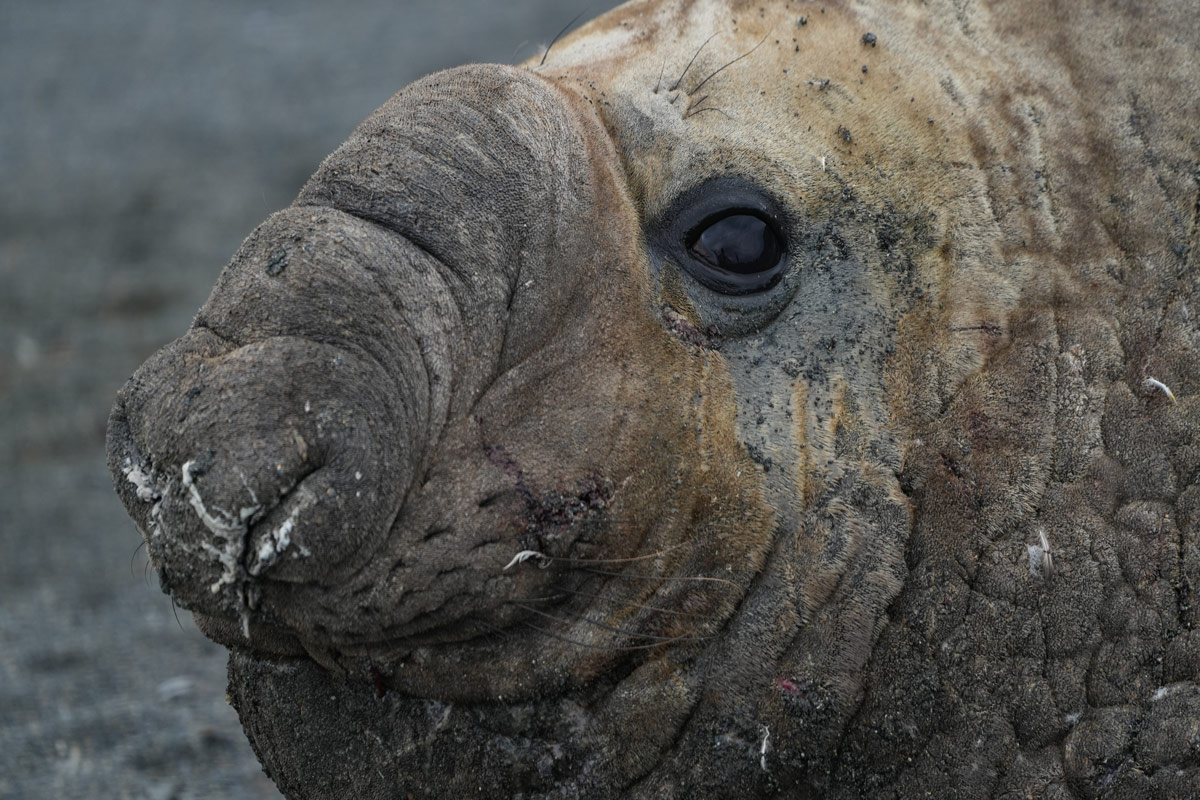
Did you know that males are bigger than females?
How Many of These 10 Southern Elephant Seal Facts Did You Already Know?
Fact #1: According to Guinness World Records, the largest southern elephant seal ever recorded was 6.85 meters (22.5 feet) long.
Fact #2: The southern elephant seal can go without food for over three months.
Fact #3: The southern elephant seal range spans the Southern Ocean, particularly around Antarctica.
Fact #4: Southern elephant seal predators are killer whales and leopard seals, which usually hunt the pups and juveniles.
Fact #5: The massive southern elephant seal size is composed of 40% skin and blubber.
Fact #6: Male elephant seals fight to establish the hierarchy of the beach, and usually the largest one claims the dominant position.
Fact #7: Male elephant seals fight for leadership by raising their upper body, attacking with open mouths and fangs, causing bloodshed and scars on opponents.
Fact #8: Male southern elephant seals are five times bigger than females.
Fact #9: The largest males often show such mutual respect that they emit a loud, violent roar, appearing threatening without actually attacking.
Fact #10: The southern elephant seal size is usually 50% larger than that of the northern elephant seal.
Join on an Antarctica adventure with Polar Latitudes Expeditions and witness the wonders of Antarctica wildlife!
Interested in seeing these majestic animals for yourself?
Reach out to our team any time!

